My Macs
The Macintosh computers I owned
Since 1986 I enjoy using the Apple Macintosh™. Starting out as a cute but simple system (MacWrite & MacDraw), over the years I have used - and owned -
- a MacPlus,
- IIcx,
- Powerbook 100,
- Powerbook Duo 230,
- Performa 5400/180,
- a Strawberry iMac 233,
- a white iMac G5 and
- 2 aluminium Intel iMacs (CoreDuo and i5)
By the way, it’s shocking what my first memory expansion cost in 1986, or the external SCSI Apple CD-rom player for that matter.
Can you still remember this?
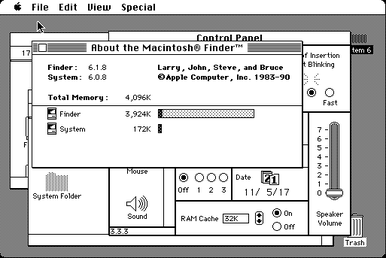
Look at Apple Mac System 6 and Apple Mac System 7 from the Eighties.
There’s also a fun online Mac Museum (in German)
MacPlus 1Mb
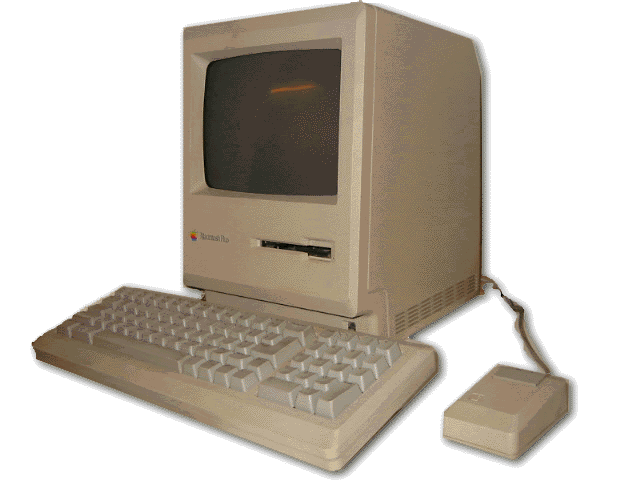
Properties:
Processor: Motorola 68000
Display: built-in 400 x 600, 9” monochrome
RAM: 1 - 4 [2] Mb
HD: none! (or SCSI) Produced: 1984 - 1986 A trusted facee, from a time when the OS + word processor MacWrite + my files would still fit on 1 floppy! And it booted in 15 seconds! Never had any issues up to 2007, and it was the first computer our son stated writing stories on.
More on MacPlus at LowEndMac - MacPlus and
EveryMac.com.
PowerBook 100
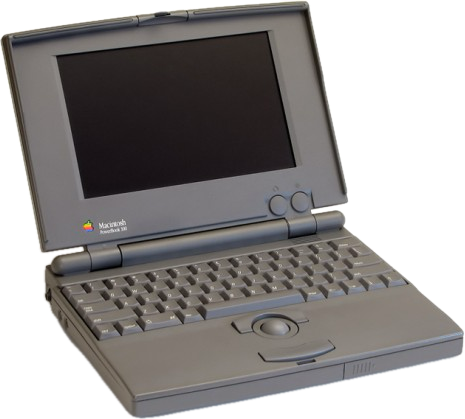
Properties:
Processor: Motorola 68000
Display: built-in 400 x 600, monochrome
RAM: 2 - 8 [4] Mb
HD: 40 Mb SCSI Produced: 1987 - 1990
My experience:
Nice machine, very portable in my backpack as I rode my bike to work. The monochrome LCD screen was good enough (except outdoors). Remember there no color printers I could afford!
Runs System 7.1; the battery is dead, but the machine worked fine on an adapter. So: fantastic for its age
Tips:
Create a RAM disk, which is way faster than reading from the HD, and better on the battery;
Gebruik je ‘grote mac’ als back-up voor bestanden (via AppleTalk kabel).
Deze Mac draait geen MacOS 7.6, wel tot en met 7.5.5.
Programma’s die goed draaien:
HyperCard 2.1, MS Word 4.0, WP 2.1, MacWrite II, Deneba Canvas 3.5, MacPaint, Studio/1, etc Meer over de PowerBook 100 op EveryMac.com.
Macintosh IIcx
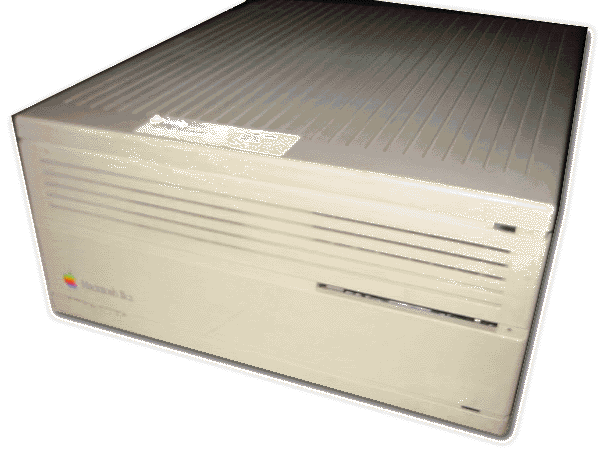
Properties:
Processor: Motorola 68030 33MHz
Display: extern, bijv. Apple RGB 13” (trinitron)
RAM: 4 - 32 [8] Mb
HD: 40 - 100 Mb SCSI Produced: 1989 - 1991?
Voor meer info: LowEndMac - IIcx
My experience:
Solide machine voor zijn tijd. De eerste Mac die je open kon maken na de IIfx, die veel te groot was om thuis ergens neer te zetten. Na 1 x zo’n ‘snelle’ mac te hebben gehuurd voor een klus, kon ik niet meer wennen aan de oude MacPlus en ben ik gaan sparen voor en tweedehands. Diverse uitbreidingen later maakte deze computer de start van Internet mee en speelde ik er Myst op. Dat was heel wat grafisch geweld voor die tijd.
Tips:
This Mac can’t run Mac System 7.6, but is OK up to 7.5.5
Programs that work:
HyperCard 2.1, MS Word 6.01, etc
More on Mac IIcx on EveryMac.com.
PowerBook Duo230
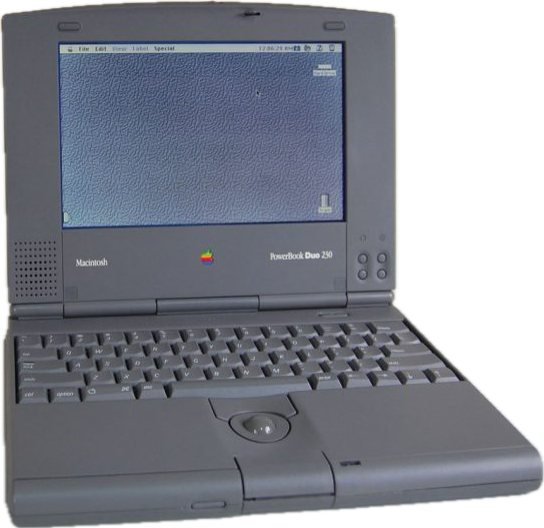
Properties:
Processor: Motorola 68030
Display: ingebouwd 400 x 600, max. 16 grijstinten
RAM: 4 - 32 [8] Mb
HD: 120 Mb SCSI Produced: 1992 - 1995?
My experience:
Lekker lichte laptop, dankzij externe floppy drive. Na 5 jaar in de tas heen en weer slepen is de accu echter op en doet het toetsenbord wat raar. Maar ja, wat wil je, we hebben er de hele prijsvraag mee gemaakt in 1994.
Kortom: veel plezier gehad van een tweedehandsje.
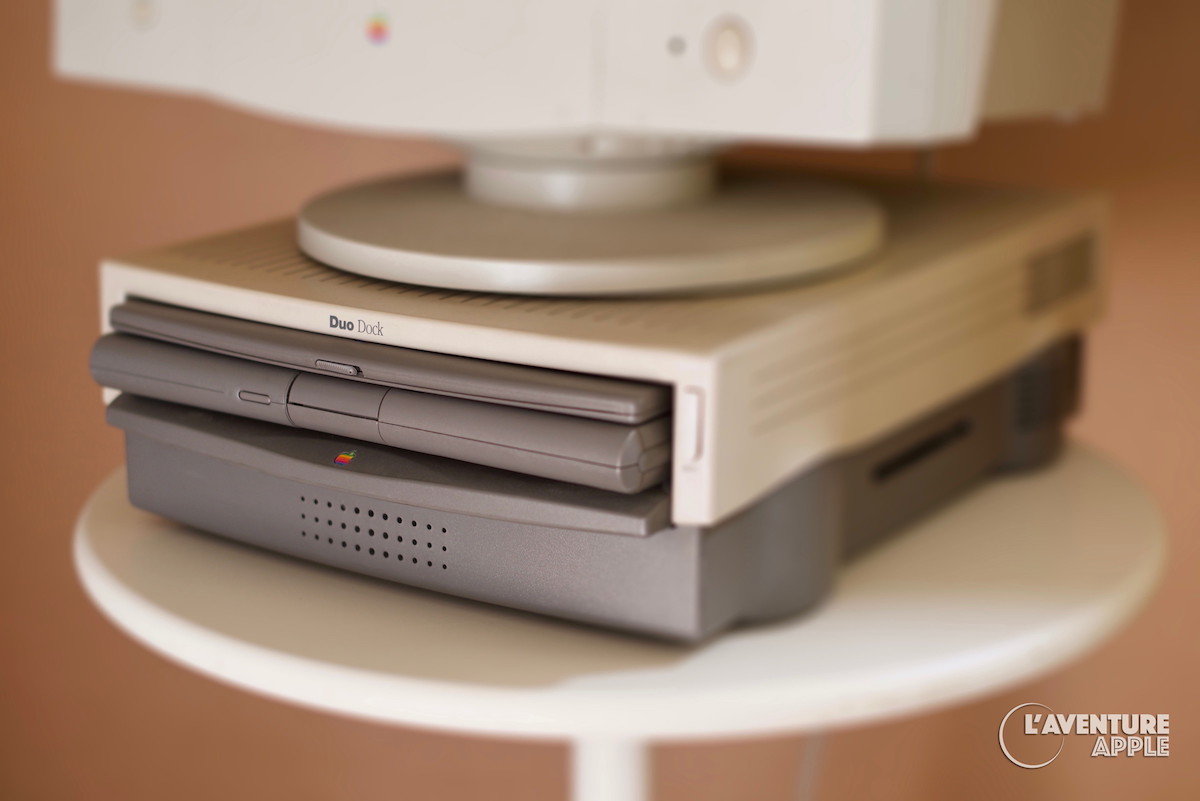
Smart detail: de Duo schuift als en videocassette in de dock, en daar zit een extra HD en coprocessor in, plus een slot om de laptop te beveiligen.
Tips:
This Mac can’t run MacOS 8, but is OK up to System 7.6;
Programs that work:
Quite fast: FreeHand 5.5, HyperCard 2.1, MS Word 6.01, etc More on DuoDock at EveryMac.com and YouTube.
Performa 5400/180
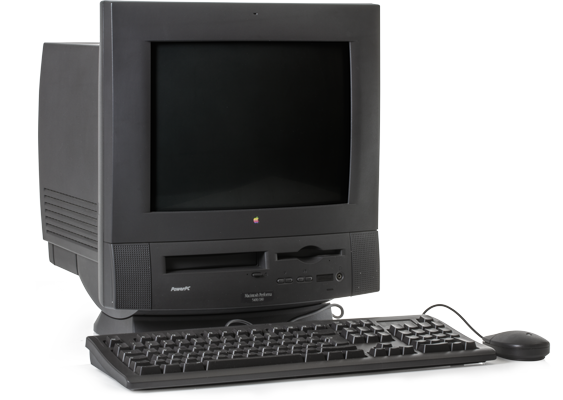
Properties:
Processor: Motorola 604e PowerPC, 180 MHz
Display: ingebouwd 15”, res. max. 832 x 624, 1 Mb VRAM
RAM: 16 - 128 [88] Mb
HD: 1,6 Gb IDE Produced: 1996 - 1997
My experience:
Nice compact machine (PC Privé), with video-in and TV-tuner + lots of software, so great fun. After 1999 it was overtaken by iMac, maar ik kan er (webdesign, multimedia bekijken, Freehand en SoftWindows95) nog altijd heel goed mee uit de voeten. Doorslaggevend voor de wat langere Mac-gebruiker: deze Mac heeft nog ‘gewone’ ADB- en modem/AppleTalk poorten plus een PCI-slot. Die uitbreidingsruimte biedt de huidige iMac niet…
Tips:
Start by installing MacOS 9.1; runs much faster, modem en L2-cache supported and looks great too!
Programs that work:
In fact EVERYTHING, like HyperCard 2.1, MS Word 98, Office98, IE5.1, FreeHand 9 etc
More on Mac Performa 5400/180 at EveryMac.com.
iMac 233 Strawberry
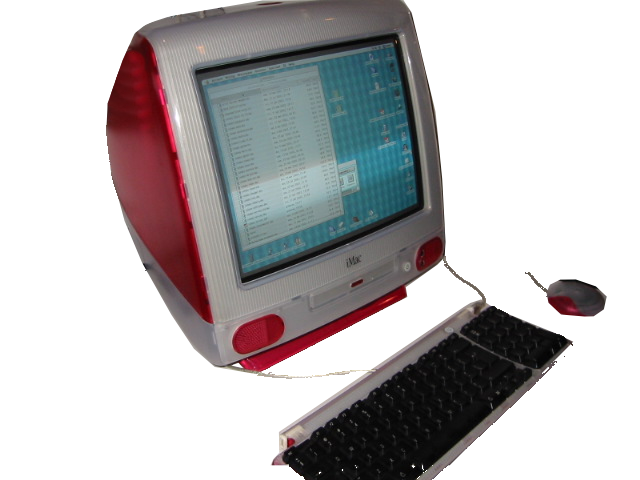
Even faster and still compact. In May 2000 is felt super. Later it was still fine for educational CD-roms for our kids. Bright color and iTunes was born, still very small…
More on the Candy color iMac at EveryMac.com.
iMac G5 20”
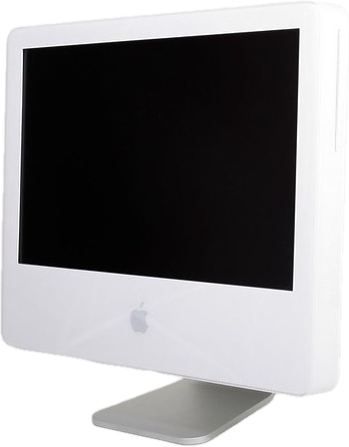
Properties:
Processor: Motorola G5, 2 GHz
Display: ingebouwd 20”, res. max. 1680 x 1050, 128 Mb VRAM
RAM: 512 Mb
HD: 233 Gb ATA Produced: 2005 - 2006
My experience:
Yes, this one was another step forward, with a screen that felt HUGE at the time. Where is the computer, friends asked. Hi, hi, hi. OSX of course, which ran very stable (based on Unix). Airport en Bluetooth built in meant no more cables collecting duct. Until the capacitors stated to swell, very happy with it.
Programs that work:
GarageBand, iPhoto, Extensis Portfolio, Revolution, JMRI
More on iMac G5 at EveryMac.com.
MacMini G4
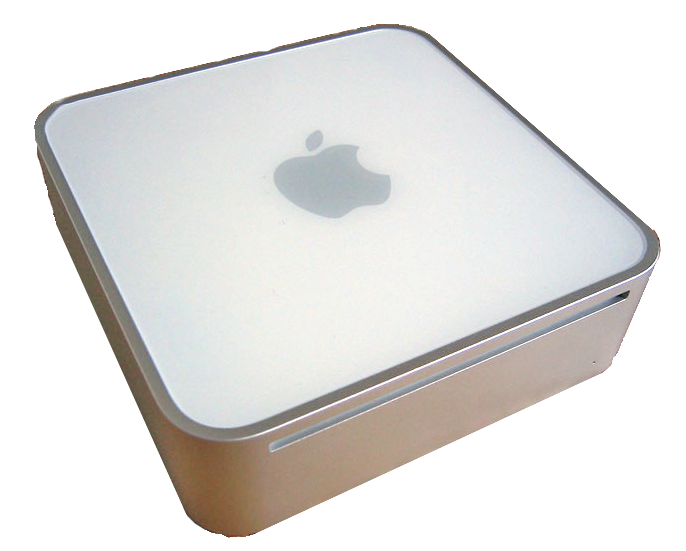
Bought one second hand for € 200. Runs JMRI v 2.14.1 with Java 1.8 in the Train Room.
More on MacMini op EveryMac.com.
iMac Core 2 Duo 20” (2007)
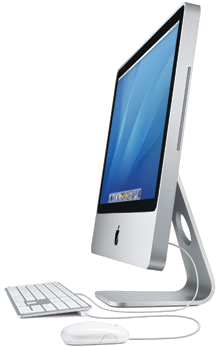
Meer on iMac Core 2 Duo at EveryMac.com.
iMac i5 21” (Mid 2011)
Still going strong in 2023, expanded memory to 12 GB DDR3 RAM for just €27 in 2020. Meer on iMac Core i5 at EveryMac.com.
Cambridge Z88
No Mac, but for 1988 this was en innovative piece of hardware. Designed by Sir Clive Sinclair. See Wikipedia
Mac software
Software I use(d) heavily:
Apple Pages, Numbers and Keynote 
From 2000 I actively wrote applications with HyperCard™ stacks.
When Apple stopped selling HuperCard in March 2004, I switched to a clone called Revolution, later renamed to LiveCode.
Another HyperCard clone was SuperCard. Both are still actively developed as of 2024.
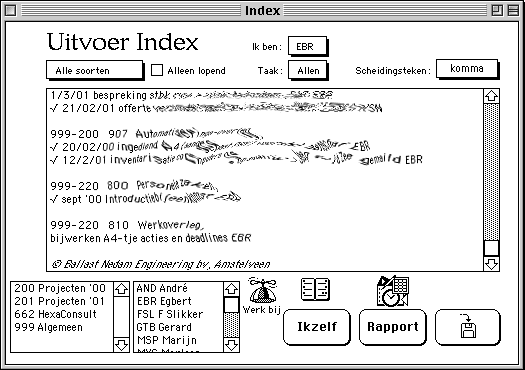
(click to zoom in)
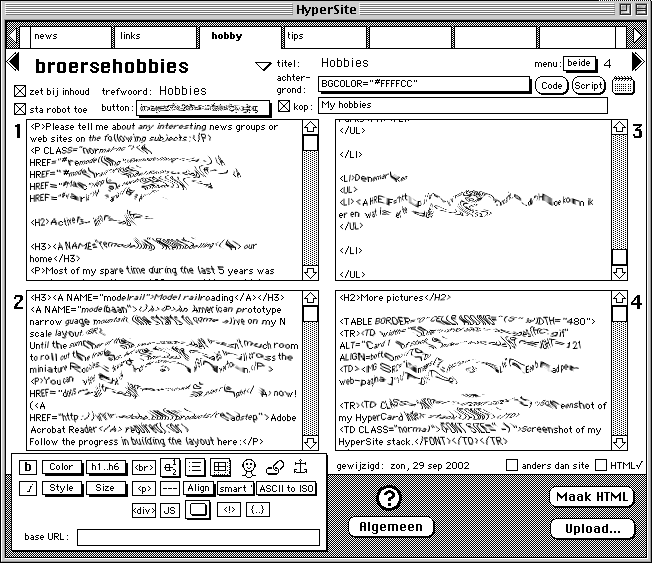
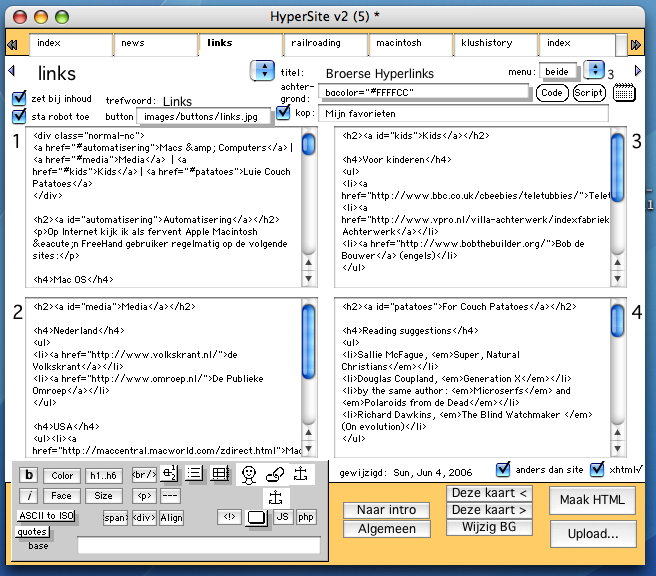
My stack HyperSite allows me to maintain my personal website. In 2006, I ported it to Revolution, so I could continue on macOS. Read my 2024 farewell to HyperSite here.
April 2024 I migrated my whole site from HyperSite + WordPress + Piwigo to Jekyll.
 LiveCode
LiveCode